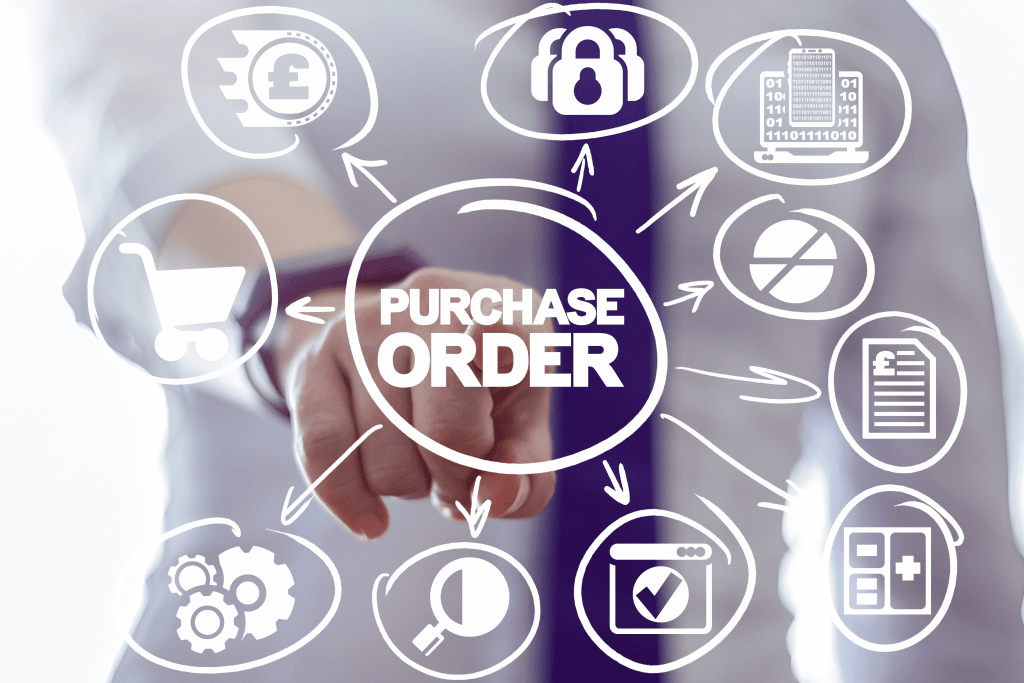A purchase order (P.O.) is an official agreement between a buyer and seller that describes the specifics of a sale, such as the product’s name, quantity, and price. It can also provide information about a service that will be given. The specifics of a P.O. assist in reducing mistakes throughout the transaction. Thus this document is essential.
What Exactly Is a Purchase Order Form?
A purchase order form is a document created by the buyer (or customer) that describes the terms of a sale. The form should include the following information:
- Date – The date issued
- Purchase Order No. – This is a new and distinct number produced only for this document. This number is significant since it will appear on various papers, including shipping paperwork and invoices, to demonstrate that the transaction was pre-approved.
- Contact Information for the Vendor – The vendor’s (or seller’s) name and contact information, including phone number and email address, should be given here.
- Description – The name of the desired items or services.
- Quantity – The number of items or services. If it’s a service, it should specify how many service calls are needed.
- Special Comments – Any particular circumstances, such as if the product or service is required within a specified time range, should be stated here.
- Price – This is the price the buyer is willing to pay. Pricing is usually hashed out with the vendor beforehand, so the values provided here should come as no surprise.
- Information on Taxes – If the customer has a particular tax number that the seller will require for billing, provide it here.
What Is the Purpose of Purchase Orders?
Businesses utilise purchase orders to streamline the purchasing process. It benefits both buyers and sellers in different ways.
A P.O. enables the buyer to do the following:
- Improve the management and tracking of incoming orders.
- Plan inventory (what has been ordered and what still needs to be ordered).
- Budgets can be managed more successfully (by understanding what has previously been spent).
- Quickly approve buyer invoices (since the transaction was approved at the P.O. stage).
A P.O. has the following advantages for the seller:
- Inventory management and tracking. The merchant knows where the merchandise went by referring to the purchase order numbers provided.
- It safeguards the seller from nonpayment. If the customer receives the goods but chooses not to pay, the P.O. is considered binding.
- Payments are made more quickly. For example, a vendor invoice that includes a purchase order number is more likely to be paid quickly.
Should I Make Use of Purchase Orders?
Small enterprises still do transactions on a handshake, but there are better practices than this. A best practice is for any size business’s management to establish a policy requiring its employees to utilise purchase orders for transactions that will need a vendor to charge them subsequently. Listing all the facts on the purchase order reduces the possibility of error or misunderstanding and, most likely, speeds up the transaction. It also expedites payment for vendors.
Is a Purchase Order Lawful?
Only once both parties have accepted a Purchase Order is it a legally binding instrument. It is essentially a contract between the Buyer and Seller for items/ services at the agreed-upon price and terms.
How Does a Purchase Order System Work?
A P.O. system would be part of a broader accounting software solution that would allow for the submission of purchase order information, the automated production of a P.O. number, and digital approval routing. A system like this will benefit other departments and the accounting department.
For example, John works at a huge bottled water company’s accounts payable department. A purchase order for newly designed labels was issued and authorised six weeks prior. The labels were delivered to the shipping department today. The company’s receiver (who signed for the delivery) goes online and enters the P.O. number from the shipping form. The system updates the purchase order’s status to reflect the received merchandise.
That isn’t everything. At the same time, the company’s inventory is updated. When the shipping label maker invoices the company and the invoice arrive in John’s email, the purchase order number will indicate that this transaction has been completed. John may produce an invoice based on the information in the purchase order with the touch of a button. Other financial records will be immediately updated as well. Because the system updates everything simultaneously, John can hunt for something or email anyone for information.
Is it possible to cancel a purchase order?
A purchase order cancellation depends on where the transaction is in the process. For example, suppose special terms are not contained in the purchase order, and a buyer thinks he no longer requires the goods or services. In that case, the buyer should engage directly with the seller and follow up with official cancellation proof. On the other hand, if the buyer has already received or opened the product, the procedure gets more difficult since it may need to be returned, and restocking or other costs may apply.
Read our latest blog here, what Is a Purchase Order Number on an Invoice.

